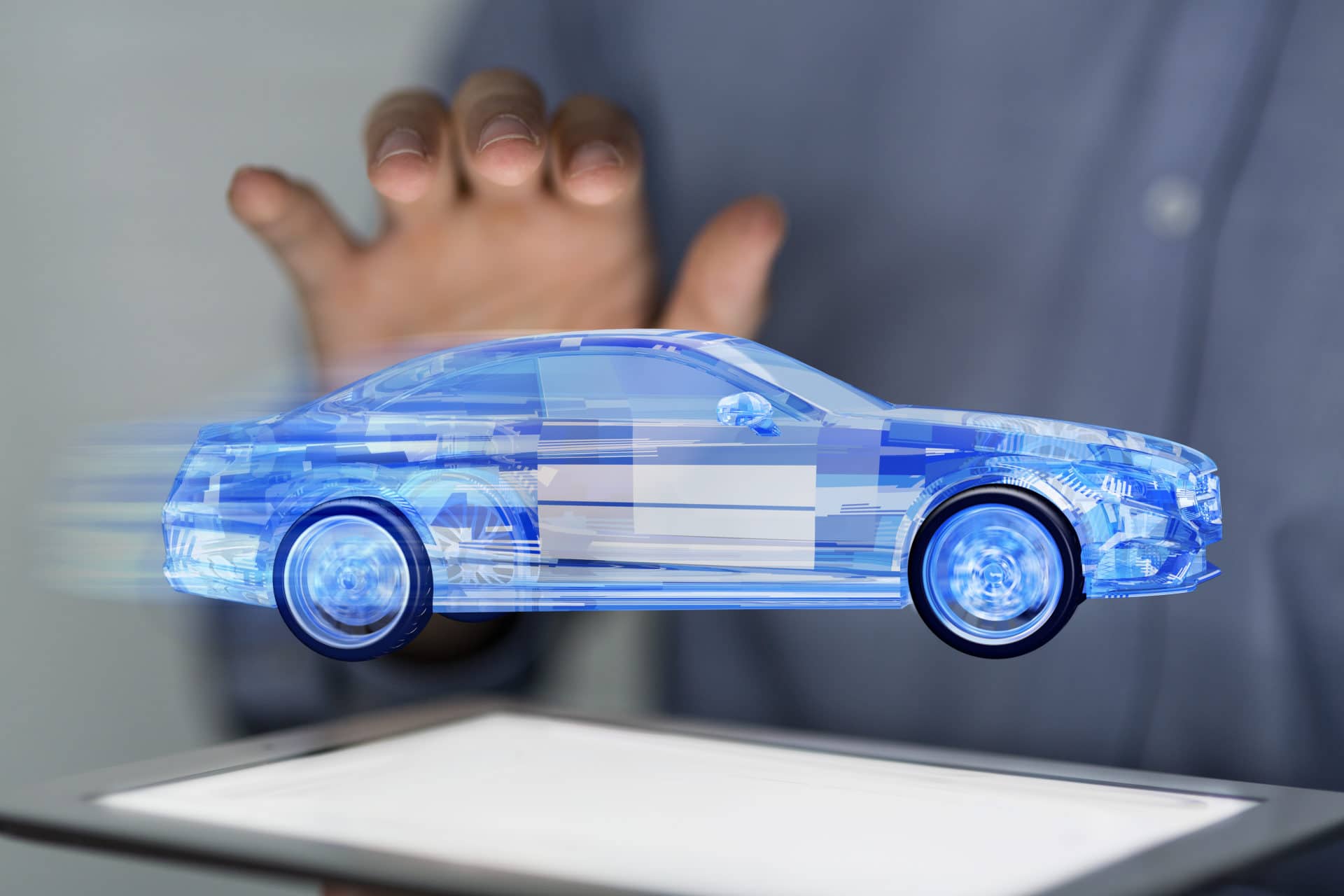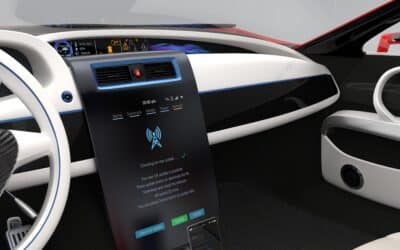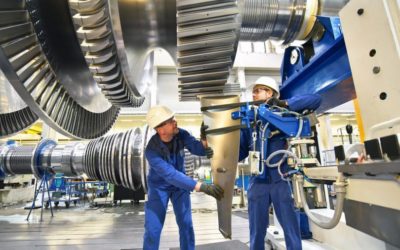Networked production is increasingly becoming the standard in the manufacturing industry. The concept takes into account the new megatrend of hyperconnectivity. hyper-connectivity. Using the automotive industry as an example, we show in this blog article, how this can lead to numerous competitive advantages and how they can be can be developed.
Under the keyword "Industry 4.0", the last few years have seen a Transformation process is taking place in the manufacturing industry. More precisely, this development is still continuing and is even visibly gaining in importance - especially in terms of networked production. In many respects, the automotive industry is a pioneer in this respect and, as the most important industrial sector in Germany, plays a key role. There are several overarching goals of Industry 4.0, respectively for the networked production:
- Increase flexibility of production: "batch size one" production
- Optimising the efficiency of individual processes: "Data Science in the paint shop".
- Maximise productivity of plant and machinery and minimise downtime: "Predictive Maintenance
Industrial production in general and automotive production in particular are involved in complex interrelationships. Starting with the supplier industry, the regulations in different international locations and markets to the complex products with long product cycles. This is precisely why the automotive industry represents a Ideal application area for networked production dar.
Reading tip: Every factory can become part of Industry 4.0 - Read more in our blog article on "Brownfield vs. Greenfield".
Inhaltsverzeichnis
The four central fields of action of networked production
When it comes to the Concrete fields of action When it comes to networked production, four main developments can be identified at the moment:
- "Vertical shop-floor integration": By networking the production plants and machines within the complex production ecosystem of the German automotive supplier industry, information about downtimes and malfunctions, the number of defective parts or even quality problems in production can be collected and transmitted.
- "Direct data integration": Once collected, data can often be further enriched and evaluated in other departments, for example to derive additional maintenance and quality measures.
- "Flexible, individual manufacturing processes": Networked production enables flexible batch size one production. This flexibilisation of the manufacturing process also allows the different standards of other countries to be met better and more easily - ideally for individual items within ongoing production.
- "Optimised workplaces": Employees are at the centre of networked production. Optimised workplaces make it possible to respond to the special, individual requirements of each employee. It is no longer the people who adapt to the machines, but the machines to the people.
Networked production thus simultaneously provides central answers to the question of the future of work as well as to the question of the Future of the automotive industry. The constantly changing requirements in a globalised and digitalised working world can be managed much better with networked production.
Networked production as a strategy for more innovation and a data-centric approach
Networked production is now one of the the Key from Innovation or creates the conditions for it. It is thus an important building block for the data-driven digitalisation. Because with the networking of production, it is necessary, Consider all manufacturing processes in their entirety.
Another important component of the Transformation are For example, adjustments in the Corporate culture. Such holistic approach also provides the opportunity to initiate or promote other innovations. or favour other innovations as well.
The networking of the factory and the networking of the product itself as in this case of the Connected Car go hand in hand. Or rather, they are mutually dependent. The data collected in the products, i.e. the cars, can be used to improve production.
The "early adopters", in particular, can Competitive advantages secure. Companies that start networking their production at an early stage can gain an advantage over their competitors. Especially in highly competitive industries such as the automotive sector, it is therefore worthwhile to offer customers the advantages derived from networking as early as possible.
The car as a software product: as a "digital twin", the connected car becomes an interface
Networked production can be integrated into a larger Overall context embed. The underlying thesis is that in the future all companies will to some extent become "Software companieshave to be ". This is because software and Data evaluation become an increasingly important part of products, production and thus the value chain.
How much the Car to a Software product is becoming more and more important is evident in several areas. On the one hand, software controls central components of cars and on the other, the driver himself is increasingly becoming a connected customer. Software is thus increasingly at the interface between companies and customers - or rather, it is becoming an interface itself.
In the future, the networked car will be part of networked production with the Smart Factory communicate, later with infrastructures such as the smart city, but also with contract workshops or as a autonomous driving vehicle with other road users.
As a result of this development, the Gartner Hype Cycle is experiencing the so-called "digital twin resp. "Digital Twin since for a number of years now. The digital twin is the digital image of real products of real products - both during production and afterwards. is referred to.
Future perspective: Artificial intelligence is the next important step in Industry 4.0
In the context of networked production, digital twins or more generally speaking Data is the basis for further developments. In particular, through the use of artificial intelligence (KI) and Machine Learning networked production can reach the next level.
The data collected during the networking of production is itself the new raw material for the next step in the value chain. Patterns can be identified in large amounts of data that can lead to new use cases.
The data collected during the networking of production is itself the new raw material for the next step in the Value chain. In large data sets (Big Data), patterns can be identified that can lead to new use cases.
One of the key implications for networked production is the improvement of human-machine interaction through Artificial intelligence. This is because the speech recognition of natural spoken language is becoming better and better thanks to AI and also systems to Image and environment recognition are becoming more and more intelligent. This opens up completely new possibilities in the operation of machines such as Cobots ("Collaborative Robots").
Also the use of Virtual reality or mixed reality devices in the production and repair of machines enable telemaintenance across locations and thus favour the the progress of Revolution of networked production in the Automotive industry.
Would you like to learn more about Machine Learning? Then take a look at our Machine Learning and Deep Learning 2018 Study.










0 Kommentare